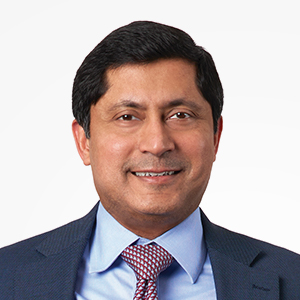In fact, based on our analysis, active mutual funds rated three stars or above by Morningstar have outperformed the median emerging markets equity ETF by over 150 basis points per year over multiple time periods.1 We believe the highly variable and diverse nature of the emerging markets equity asset class makes it well suited to active management. By remaining benchmark-aware without being benchmark-guided, active managers can provide added value by maintaining flexibility in pursuit of attractive regions, industries and individual companies.
To better evaluate active managers of emerging markets equity requires, in our view, an understanding of the factors that drive benchmark performance in various market conditions. This Insights report explains these benchmark dynamics, highlights the benefits of active management in emerging markets equity and presents some of the pitfalls of passive approaches.
The Popularity of ETFs in Emerging Markets Equity
Despite the benefits of active management, investments in emerging markets equity often flow by default to ETFs and other passive vehicles. Over the last five years, passive strategies have attracted roughly 40 times the capital flows of active strategies in the U.S., with $72bn of $86bn in flows to emerging markets equity directed to passive emerging markets ETFs (Figure 1).
Figure 1. Five-year Cumulative Flows to U.S.-Listed Active and Passive EME Strategies
USD billions
Source: Morningstar. As of June 30, 2020.
Emerging Markets Equity ETFs Lagging Their Benchmarks
In the broader capital markets, the rising popularity of ETFs sometimes may reflect an increased focus on fees. However, investors focused on efficiency and performance need to understand that ETFs for emerging markets equities are often far less capable of delivering benchmark returns than ETFs tracking large capitalization U.S. equities. As shown in the charts below, the largest U.S. equity ETF (SPY) has managed to track the S&P 500 over the last 15 years, but iShares MSCI Emerging Markets (EEM) and Vanguard FTSE Emerging Markets (VWO), two of the largest emerging markets ETFs, have trailed their benchmarks by a far greater margin over the same period.
Figure 2. iShares MSCI Emerging Markets ETF Has Historically Lagged Its Benchmark
Hypothetical Growth of $100,000
Source: Bloomberg. Figures are indexed at $100,000 as of June 30, 2005. They reflect hypothetical portfolio growth based on monthly total returns over 15 years ending June 30, 2020.
Figure 3. Vanguard FTSE Emerging Markets ETF Has Historically Lagged Its Benchmark
Hypothetical Growth of $100,000
Source: Bloomberg. Figures are indexed at $100,000 as of June 30, 2005. They reflect hypothetical portfolio growth based on monthly total returns over 15 years ending June 30, 2020.
The Sources of Physical ETF Tracking Error
Physical ETFs attempt to track their target indexes by holding all, or a representative sample, of the underlying securities that make up the index. Generally higher tracking error in physical ETFs tied to the MSCI Emerging Markets Index stems from a combination of factors, including the high number and relative illiquidity of the underlying constituent equities, as follows:
- Transaction pricing: Due to a lack of liquidity in certain securities, the stock price observed in the calculation of the index is not always available to a tracking portfolio. Supply-demand dynamics can push the actual price at which a tracking portfolio can transact to buy or sell to a less favorable level.
- Optimized sampling: Physical emerging markets ETFs typically use optimized sampling techniques, whereby they hold a basket of securities designed to match the characteristics of the benchmark, but not exactly the same securities, in the same weightings. Optimized sampling is typically employed in situations where the index has fairly illiquid constituents, a large number of index members or where legal and regulatory barriers to owning certain securities exist. The very nature of the sampling technique is imprecise, which can lead to higher tracking error.
- Depositary receipts: An additional factor that can affect the tracking efficiency of physical replication funds tracking the MSCI Emerging Markets Index is that many of these funds trade American Depositary Receipts (ADRs) or Global Depositary Receipts (GDRs) instead of buying and selling the underlying local securities. Listed on large U.S. or European exchanges, ADRs and GDRs are designed to mirror the ownership of a company’s domestic stock listing. Deviations between these proxies and their local parents contributes to tracking error in ETFs.
- Fees: ETFs, like traditional mutual funds, charge management fees that detract from the products’ net asset value and, in many instances, prevent an ETF from matching the performance of the index it tracks. ETFs also incur shareholder transaction costs through brokerage commissions and bid-ask spreads—costs that take away from an investor’s actual return even if not captured in an ETF’s reported performance.
Many Active Strategies Outperform ETFs in EME
Given the above evidence of ETF’s difficulty replicating emerging markets equity benchmarks, we believe active management strategies should be compared not only to benchmarks, but also to passive strategies.
Taking a more detailed look at multiyear performance, mutual funds rated three stars or above by Morningstar have surpassed benchmark performance by more than 75 basis points over the last 10 years on an annualized basis. At the same time, they have outperformed the median passive emerging markets equity ETF by over 150 basis points per year.
Figure 4. Actively Managed Mutual Funds Have Outperformed ETFs by a Comfortable Margin
Compound annual return (percentage) for time period, as of June 30, 2020
Source: Morningstar.
Benchmark Inefficiencies Provide Active Management Opportunities
Setting aside the tracking issues confronting emerging markets equity ETFs, we believe the MSCI emerging markets benchmark itself remains inefficient for the following reasons:
- Weighting by market capitalization implies a backward-looking bias toward stocks that have performed well in the past
- Holdings of state-owned enterprises, whose interests are not necessarily aligned with minority shareholders, can lead to unproductive capital allocation decisions
- Minimal exposure to small capitalization stocks hampers access to some of the fastest growing companies in emerging markets
- Lack of a financial viability requirement may detract from performance
- The MSCI benchmark is also limited to 1,385 constituents, when there are over 10,000 public companies in the broader emerging markets universe.
Some investors erroneously assume that all index providers apply some sort of quality criteria to the stocks under consideration for inclusion in order to ensure that only businesses of a certain caliber are eligible. In fact, only some indexes maintain requirements for admission. For a stock to be added to the S&P 500, for example, it first must demonstrate “financial viability” with positive GAAP earnings for the most recent year and the last four quarters. However, MSCI indices, including MSCI Emerging Markets, do not have a financial viability requirement, suggesting that both money earners and money losers can gain entry.
Active managers have the flexibility to build more efficient portfolios and to incorporate a preference for financial viability in their holdings.
The Benefits of Actively Targeting Profitable Companies
The Neuberger Berman Emerging Markets Equity team targets companies with strong business models because it believes that a company’s financial viability is an important contributor to the performance of its stock. To prove this point, we performed an analysis of the profitability and stock performance of MSCI Emerging Markets constituents over the last five years, as follows:
- We established the return on equity (ROE) as a proxy for profitability for all constituents of the MSCI Emerging Markets Index as of year-end of 2014.
- We then divided the index constituents into three profitability buckets:
- Year-end 2013 ROE >=15% captured 49% of index constituents with a weighted average ROE of 24%
- Year-end 2013 ROE <15% and >0% captured 47% of index constituents with a weighted average ROE of 9%
- Year-end 2013 ROE <0% captured 3% of index constituents with a weighted average ROE of -12%
- We tracked the performance of the constituents’ stocks in each bucket for five years from 2015 through 2019.
Our analysis, as summarized in Figure 5 below, showed that the higher ROE bucket was responsible for the entirety of positive return in the index over the five-year period 2015–2019. These results argue that active managers have a real opportunity to improve return outlooks relative to the benchmark by focusing on higher ROE companies. The analysis demonstrates that highly profitable companies have yielded higher returns over time versus those that were barely profitable or not profitable. We also found that this return disparity held true over time by examining eight rolling five-year periods: from 2008 – 12 through 2015 – 2019.
Figure 5. Lower ROE Companies Dragged Down Index Performance Over Five Years
Total return 2015 – 2019
Source: FactSet, data as of December 31, 2019. Indices are unmanaged and are not available for direct investment. MSCI Emerging Markets Indexes are net total return indexes, which reinvest dividends after the deduction of withholding taxes. Investing entails risks, including possible loss of principal. Past performance is no guarantee of future results.
Conclusion
By focusing on company profitability and taking a broader view of the emerging markets stock universe, active managers have real potential to positively differentiate their returns relative to passive strategies and their index benchmarks. Emerging markets equity is a particularly supportive asset class for active management given the above-mentioned divergence of returns among asset class constituents. The ETFs designed to track emerging markets equity indexes are challenged by illiquidity and sampling issues, while the indexes themselves can be inefficient due to the inclusion of less attractive companies and state-run enterprises, for example. We believe this all points to investors having to carefully consider their investment options in order to maximize the capital appreciation potential of this growth asset class.
















